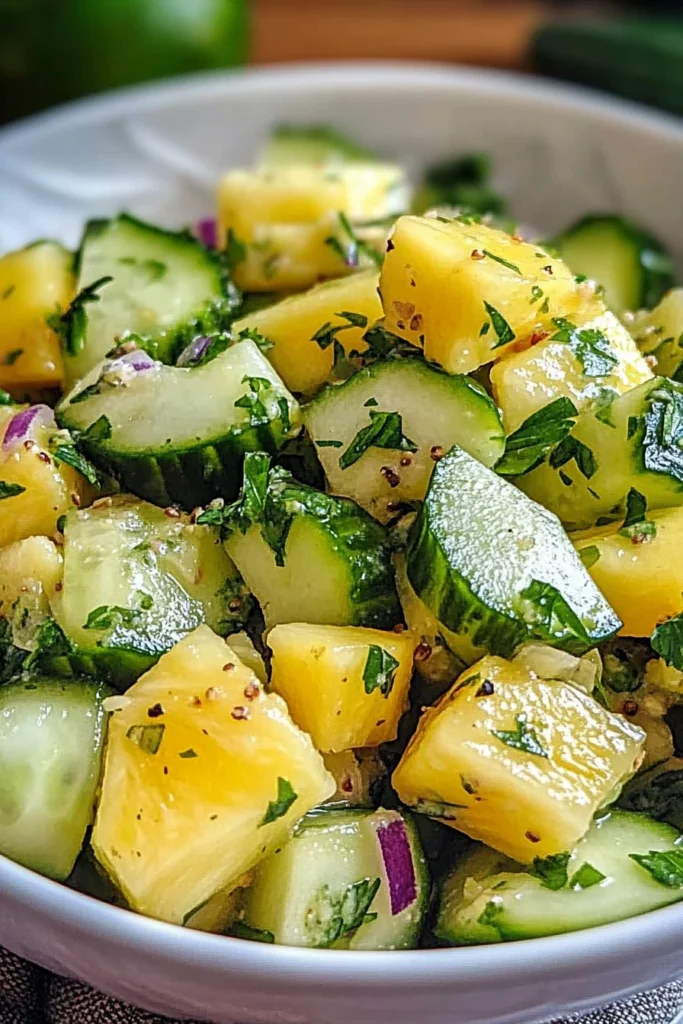Minestrone soup is one of the most beloved dishes in Italian cuisine — a vibrant, hearty, and nourishing soup that celebrates the beauty of seasonal vegetables. With its rich tomato base, tender beans, and perfectly cooked pasta, minestrone is a meal in itself, offering warmth, comfort, and nutrition in every spoonful.
This recipe captures the essence of traditional Italian home cooking: simple ingredients, slow simmering, and layers of flavor that develop naturally. Whether served as a light lunch, a cozy dinner, or a starter for a family feast, minestrone soup is a timeless classic that never fails to satisfy.
The Essence of Minestrone Soup
The essence of minestrone lies in its versatility and heartiness. It’s a soup that adapts to the seasons — in summer, it’s made with fresh zucchini, tomatoes, and green beans; in winter, with root vegetables and cabbage. The combination of beans, pasta, and vegetables creates a balanced, filling dish that’s both wholesome and delicious.
It’s a celebration of abundance, a dish that turns humble ingredients into something extraordinary.
Why This Recipe Works
This recipe works because it builds flavor in layers. The onions, carrots, and celery form the aromatic base, the tomatoes add richness and acidity, and the beans and pasta provide texture and substance. The herbs and garlic infuse the broth with warmth and depth, while a final drizzle of olive oil ties everything together.
The result is a soup that’s hearty, flavorful, and deeply comforting — a perfect example of Italian simplicity at its best.
Ingredients and Their Roles
Olive oil: Adds richness and helps sauté the vegetables.
Onion, carrot, and celery: The classic Italian soffritto base that builds flavor.
Garlic: Adds aroma and depth.
Tomatoes: Provide acidity and richness to the broth.
Vegetable broth: Forms the flavorful base of the soup.
Beans: Add protein and heartiness.
Pasta: Gives the soup body and texture.
Seasonal vegetables: Bring freshness and variety.
Herbs: Add fragrance and authenticity.
Salt and pepper: Balance the flavors.
Step-by-Step Recipe
Ingredients
- 2 tablespoons olive oil
- 1 onion, chopped
- 2 carrots, diced
- 2 celery stalks, diced
- 3 garlic cloves, minced
- 1 zucchini, diced
- 1 cup green beans, chopped
- 1 can (14 oz) diced tomatoes
- 4 cups vegetable broth
- 1 can (15 oz) cannellini or kidney beans, drained and rinsed
- 1 cup small pasta (elbow, ditalini, or shells)
- 1 teaspoon dried oregano
- 1 teaspoon dried basil
- ½ teaspoon thyme
- Salt and black pepper to taste
- 2 cups chopped spinach or kale
- Grated Parmesan cheese and fresh basil for garnish
Preparation
- Sauté the aromatics. In a large pot, heat olive oil over medium heat. Add the onion, carrots, and celery. Cook for 5–7 minutes until softened. Add the garlic and cook for 1 minute more.
- Add the vegetables and tomatoes. Stir in the zucchini, green beans, and diced tomatoes. Cook for 5 minutes to allow the flavors to blend.
- Add the broth and herbs. Pour in the vegetable broth, then add oregano, basil, thyme, salt, and pepper. Bring to a boil, then reduce heat and simmer for 20 minutes.
- Add the beans and pasta. Stir in the beans and pasta. Simmer for another 10–12 minutes until the pasta is tender.
- Add the greens. Stir in the spinach or kale and cook for 2–3 minutes until wilted.
- Serve. Ladle into bowls and top with grated Parmesan cheese and fresh basil. Drizzle with olive oil if desired.
Tips for Perfect Minestrone Soup
- Use seasonal vegetables for the freshest flavor.
- Don’t overcook the pasta — it should be al dente.
- Add the greens at the end to preserve their color and nutrients.
- Adjust the thickness by adding more broth or water.
- Let the soup rest for a few minutes before serving to deepen the flavor.
Variations and Flavor Combinations
1. Classic Italian Minestrone
Traditional version with beans, pasta, and seasonal vegetables.
2. Winter Minestrone
Add potatoes, cabbage, and turnips for a heartier version.
3. Summer Minestrone
Use fresh tomatoes, zucchini, and green beans for a lighter soup.
4. Vegan Minestrone
Skip the cheese and use vegetable broth for a plant-based version.
5. Minestrone with Rice
Replace pasta with rice or quinoa for a gluten-free option.
6. Creamy Minestrone
Add a splash of cream or blend part of the soup for a velvety texture.
Serving Suggestions
Minestrone soup pairs beautifully with:
- Crusty bread or garlic toast.
- A fresh green salad.
- Grilled cheese or panini sandwiches.
- Roasted vegetables or antipasto platters.
- A glass of red wine or sparkling water with lemon.
Make-Ahead and Storage
Make-ahead: The soup can be made up to two days in advance. Add the pasta just before serving to prevent it from becoming mushy.
Storage: Store leftovers in an airtight container in the refrigerator for up to 4 days.
Reheating: Reheat gently on the stove over medium heat. Add a splash of broth if the soup thickens.
Freezing: Freeze without pasta for up to 3 months. Add fresh pasta when reheating.
Nutritional Information (per serving)**
- Calories: 280 kcal
- Protein: 10 g
- Fat: 8 g
- Carbohydrates: 40 g
- Fiber: 8 g
The History of Minestrone Soup
Minestrone soup has ancient roots in Italy, dating back to the Roman Empire. The word “minestrone” comes from “minestra,” meaning soup, and originally referred to a simple vegetable stew made with whatever ingredients were available. Over time, it evolved into a hearty dish that reflected the Italian philosophy of using fresh, seasonal produce and making the most of humble ingredients.
Today, minestrone is a symbol of Italian home cooking — a dish that varies from region to region but always embodies warmth, generosity, and flavor.
Texture and Flavor Profile
The perfect minestrone soup is thick, hearty, and full of texture. The vegetables should be tender but not mushy, the beans creamy, and the pasta perfectly cooked. The tomato broth ties everything together with a balance of sweetness, acidity, and herbal notes.
Each spoonful delivers a medley of flavors — earthy, savory, and fresh — that make this soup both comforting and invigorating.
Common Mistakes and How to Avoid Them
Overcooking the pasta: Add it near the end to keep it firm.
Using too much salt early: The broth reduces as it cooks, so season gradually.
Skipping the soffritto: The onion, carrot, and celery base is essential for flavor.
Adding all vegetables at once: Stagger additions based on cooking time.
Not letting it rest: The flavors deepen as the soup sits.
Chef’s Tips
- Add a Parmesan rind to the soup while simmering for extra umami.
- Stir in a spoonful of pesto before serving for a burst of flavor.
- Use homemade broth for the best taste.
- Garnish with fresh herbs and a drizzle of olive oil for presentation.
- Serve with a sprinkle of chili flakes for a touch of heat.
Pairing Ideas
With Drinks:
- Red wine like Chianti or Sangiovese.
- White wine such as Pinot Grigio.
- Sparkling water with lemon or herbal tea.
With Other Dishes:
- Pair with bruschetta or focaccia.
- Serve alongside roasted chicken or grilled fish.
- Add a side of antipasto or marinated olives.
The Joy of Italian Comfort Cooking
Minestrone soup embodies the joy of Italian comfort cooking — simple, nourishing, and full of love. It’s a dish that brings people together, perfect for sharing around the table on a cool evening or as a light meal on a sunny day. The aroma of simmering vegetables and herbs fills the kitchen with warmth and nostalgia.
It’s proof that the best meals are made with care, patience, and fresh ingredients.
The Science of Flavorful Soup
The secret to a flavorful soup lies in layering. The soffritto base releases natural sugars from the vegetables, the tomatoes add acidity, and the herbs infuse the broth with aroma. The beans and pasta absorb the flavors, creating a cohesive, well-rounded dish.
The result is a soup that’s rich, balanced, and deeply satisfying.
Presentation and Finishing Touches
For an elegant presentation, ladle the soup into bowls and top with grated Parmesan, a drizzle of olive oil, and fresh basil. Serve with toasted bread or garlic crostini on the side.
For a restaurant-style touch, add a swirl of pesto or a few shavings of Parmesan cheese.
Modern Variations
- Keto Minestrone: Skip the pasta and add extra vegetables.
- Low-Fat Version: Use less oil and skip the cheese.
- Vegan Alternative: Use vegetable broth and omit Parmesan.
- Spicy Minestrone: Add red pepper flakes or chili oil.
- Minestrone with Lentils: Replace beans with lentils for extra protein.
The Perfect Comfort Meal
Minestrone soup is the perfect comfort meal for any occasion. It’s hearty, flavorful, and deeply satisfying. Whether served as a main course or a starter, it brings warmth and joy to every table.
It’s a dish that proves that comfort food can be both wholesome and vibrant — a timeless classic that never fails to please.
The Cultural Influence of Minestrone Soup
Minestrone soup represents the heart of Italian cuisine — resourceful, seasonal, and full of flavor. It’s a dish that transcends regions and generations, adapting to local ingredients and personal tastes. Its enduring popularity reflects the universal appeal of simple, homemade food that nourishes both body and soul.
The Role of Vegetables and Beans
Vegetables and beans are the soul of minestrone. They provide texture, nutrition, and flavor, turning a simple broth into a hearty meal. The beans add creaminess and protein, while the vegetables bring freshness and color. Together, they create a perfect balance of taste and nourishment.
The Perfect Spoonful
The perfect spoonful of minestrone soup combines tender vegetables, creamy beans, and perfectly cooked pasta in a rich tomato broth. It’s warm, hearty, and full of flavor — a bite that captures the essence of Italian comfort food.
Conclusion
Minestrone soup is a celebration of flavor, texture, and tradition. With its colorful vegetables, hearty beans, and aromatic herbs, it’s a dish that feels both nourishing and indulgent.
Easy to prepare yet impressive to serve, it’s perfect for any occasion. This recipe proves that with fresh ingredients and a touch of care, you can create a meal that’s both comforting and unforgettable — a true masterpiece of classic Italian home cooking.







